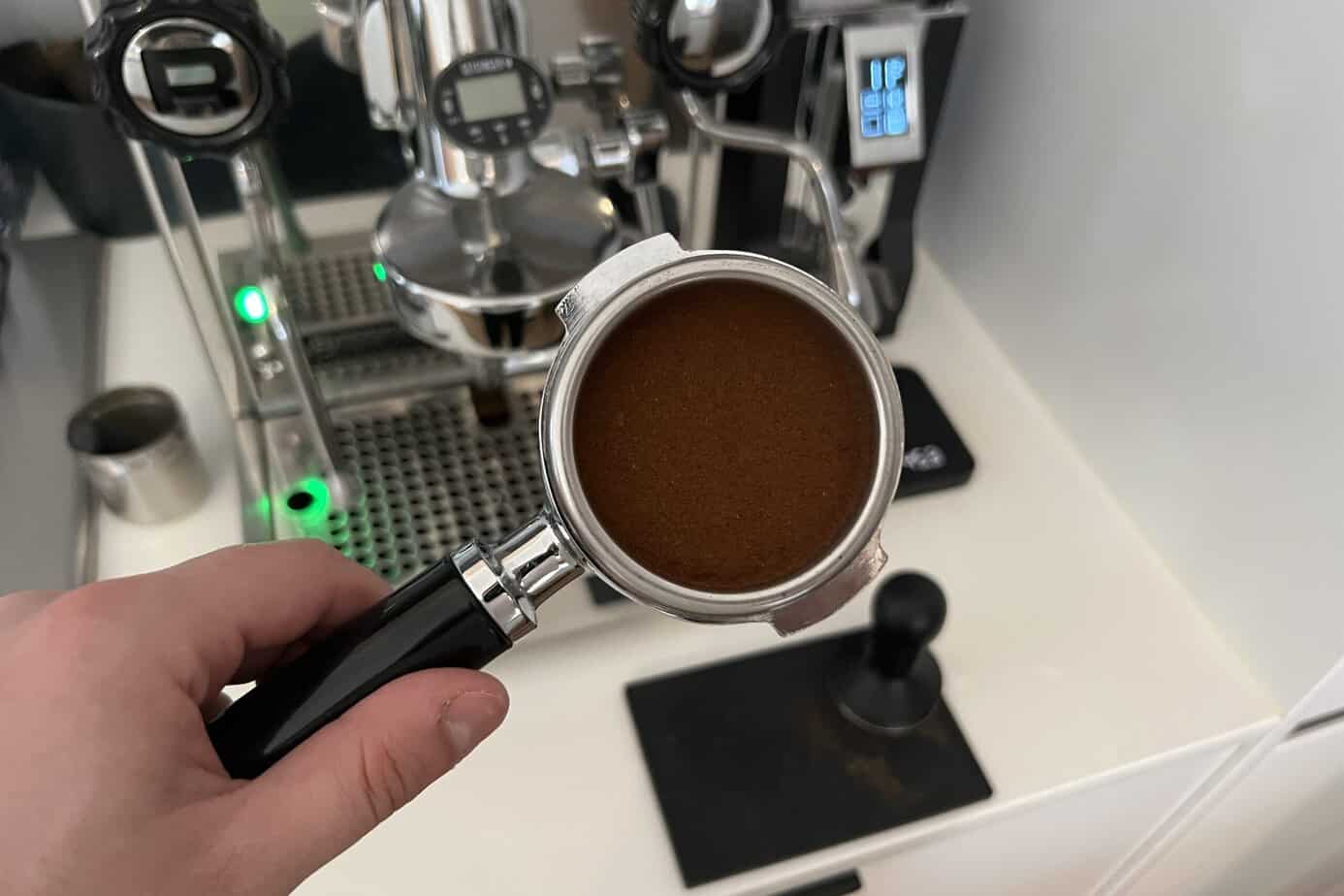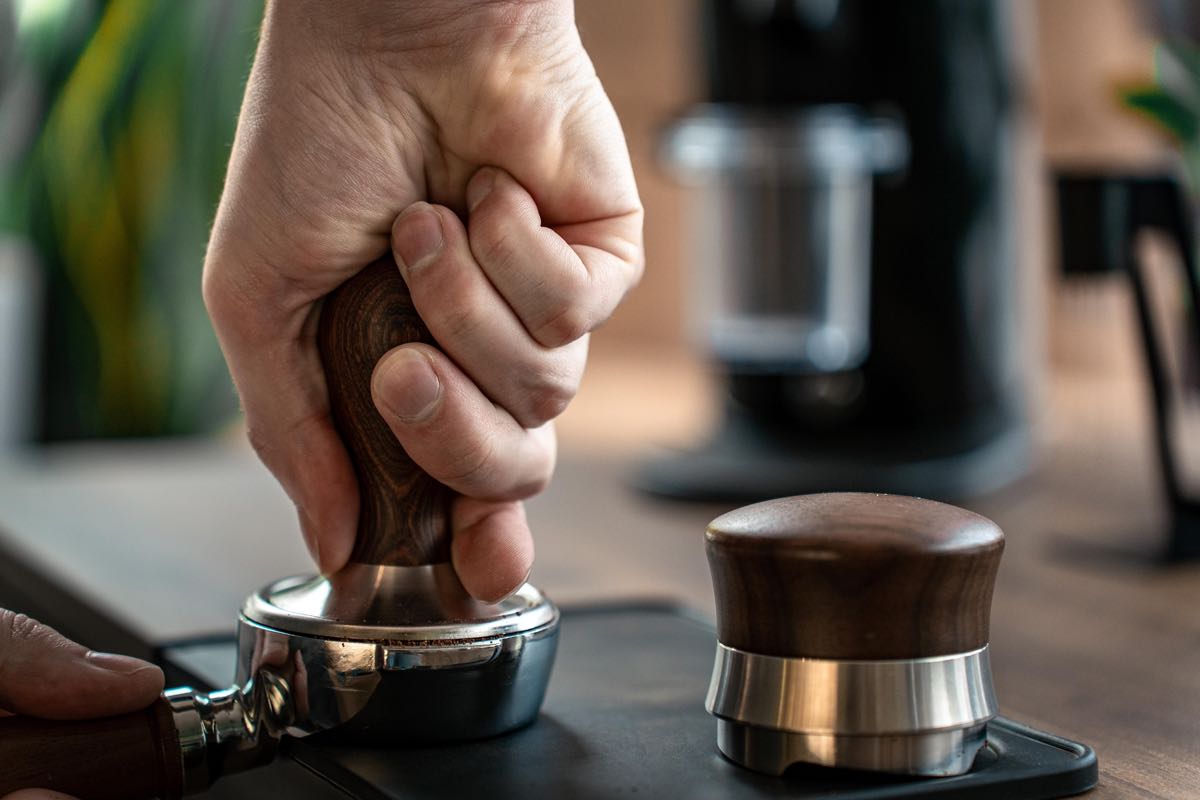Brewing espresso at home can be incredibly satisfying, offering the opportunity to savor rich and nuanced flavors with each cup. However, achieving that perfect shot requires meticulous attention to detail. One of the most discussed elements in espresso preparation is tamping. So, how firm should your tamp be when making espresso? In this guide, we’ll delve into the principles of tamping, the correct methods, and common pitfalls to help you consistently extract excellent espresso shots. Explore the features and performance of this machine in our Philips 5500 LatteGo review

The Importance of Tamping for Exceptional Espresso
Tamping is a critical step in the espresso extraction process. By pressing the coffee grounds into a uniform puck, tamping ensures that water flows evenly through the coffee during brewing. If the grounds are tamped unevenly, water may find the easiest path, creating channels in the coffee bed. This leads to uneven extraction and inconsistent flavors in your espresso. Dive into the details of the Philips 5400 LatteGo review
Proper tamping helps avoid two primary issues:
- Under-extraction: Results in a weak, acidic espresso.
- Over-extraction: Causes a bitter taste.
The objective is to create a balanced, flat surface that promotes uniform water flow, ensuring each shot is brewed to perfection. Compare these two models in our Philips LatteGo 5400 vs 4300 review
Determining the Right Tamping Pressure
A commonly suggested tamping pressure is approximately 30 pounds of force. However, this number serves more as a guideline than a strict rule. The optimal tamping pressure is less about hitting a specific value and more about applying consistent and even pressure each time. As a home barista, developing a technique that allows you to tamp uniformly with steady pressure is paramount. Discover the differences between these machines in our Philips 3200 vs 4300 vs 5400 review
Here’s a straightforward method: press down until the grounds feel firm and compact. Avoid using excessive force. Over-tamping can lead to over-extraction, making your espresso bitter, while insufficient pressure can cause under-extraction, resulting in a weak shot. Learn how these two models compare in our Philips 3200 vs 4300 review
Steps to Perfect Your Tamping Technique
Evenly Distribute the Coffee GroundsBefore tamping, ensure the coffee grounds are evenly spread in the portafilter. Uneven distribution can lead to inconsistent tamping and channeling. Use a coffee distribution tool or gently tap the portafilter on the counter to level the grounds.
Hold the Tamper ProperlyA correct grip on the tamper is essential for control and even pressure. Hold the tamper with a straight wrist, elbow at a 90-degree angle, and your fingers wrapped around the base of the tamper. This position allows you to apply uniform pressure without straining your wrist.
Apply Steady PressurePress down firmly on the tamper until you feel the coffee grounds compact. Once you encounter resistance, stop pressing—applying more pressure won’t enhance the shot and may cause over-extraction. Focus on maintaining a consistent, even pressure throughout the tamping process.
Maintain ConsistencyConsistency is key to making great espresso. Apply the same amount of pressure each time you tamp to ensure a uniform puck for every shot.
Use a Stable Tamping SurfaceUtilizing a stable surface, such as a tamping mat or station, can significantly improve your tamping technique. It not only protects your countertop but also keeps the portafilter steady, ensuring a level tamp.
Common Tamping Errors to Avoid
Irregular TampingOne frequent mistake is tamping unevenly. If the tamper isn’t level, water will flow unevenly through the coffee, leading to inconsistent extraction. Always verify that the tamper is flat and that pressure is evenly distributed across the coffee bed.
Excessive or Insufficient PressureIt’s easy to fixate on using a specific amount of pressure. Pressing too hard can overly compress the grounds, resulting in over-extraction and bitterness. Conversely, not applying enough pressure can create a loose puck that doesn’t hold together, leading to under-extraction and a sour taste. Striking the right balance is crucial.
Neglecting Proper Ground DistributionIf the coffee grounds aren’t evenly distributed, you’re likely to create an uneven tamp. Without even distribution, water will naturally flow through the less dense areas of the coffee bed, causing uneven extraction and poor flavor. Always take the time to distribute the grounds properly before tamping.
Tools to Improve Tamping Consistency
Enhance your tamping technique with these tools:
- Coffee Distribution Tools: Help spread the coffee grounds evenly, minimizing the risk of uneven tamping and channeling.
- WDT (Weiss Distribution Technique) Tools: Use fine needles to break up clumps in the coffee grounds, ensuring even distribution.
- Pressure-Calibrated Tampers: Perfect for beginners, these tampers click once the desired tamping pressure is achieved, ensuring consistent results every time.
Practice Makes Perfect
Mastering tamping requires time and practice. If your initial shots aren’t flawless, don’t be discouraged! Continue practicing, and soon you’ll develop the muscle memory needed for the correct pressure and technique. Uncover the key distinctions in our Philips 3200 vs 5400 review
Additionally, feel free to experiment with different pressure levels. Lighter tamping can enhance the sweetness of the coffee, while a firmer tamp might accentuate bolder, more intense flavors. Discovering the right pressure for your taste preferences is part of the enjoyment!
Conclusion: Consistency is Essential for Outstanding Espresso
When tamping espresso, focus on technique rather than force. Applying consistent, even pressure while ensuring proper ground distribution will significantly enhance the quality of your espresso. With practice and attention to detail, you’ll be able to pull shots that rival those from your favorite coffee shop.
Remember, don’t fixate on achieving a specific pressure. Consistency is the most important factor, and the more you practice, the more intuitive your tamping will become. Embrace the process of honing your home barista skills, and soon you’ll be brewing espresso like a professional!

Frequently Asked Questions About Tamping
Q: How firm should I tamp my espresso?
A: Consistency is key. While around 30 pounds of pressure is often recommended, it's more important to apply even pressure until the grounds are firmly compacted without over-pressing.
Q: Is it possible to over-tamp my espresso?
A: Yes, over-tamping can excessively compress the grounds, leading to over-extraction and a bitter taste. Once the grounds feel compact, stop pressing.
Q: What are the consequences of uneven tamping?
A: Uneven tamping can cause channeling, resulting in uneven extraction and a poorly balanced espresso shot.
Q: Do I need a tamping mat?
A: While not mandatory, a tamping mat provides a stable surface, protects your countertop, and helps achieve a level tamp.
Q: Should I invest in a calibrated tamper?
A: A calibrated tamper can be beneficial if you struggle with consistency. It ensures you apply the same pressure each time, improving your results.
